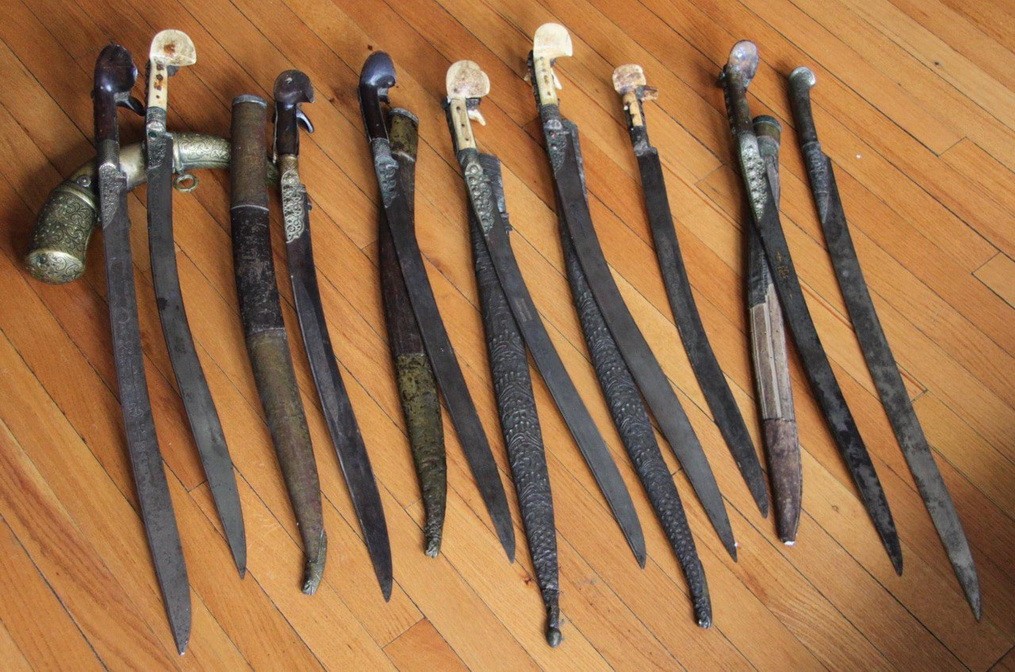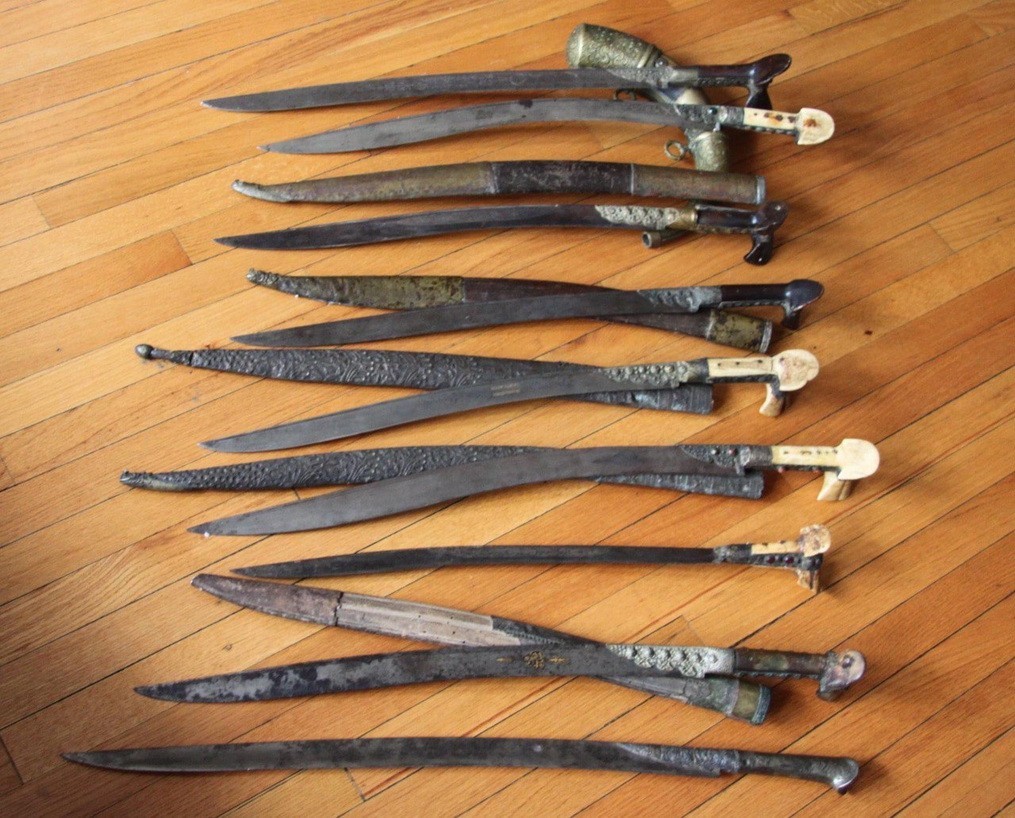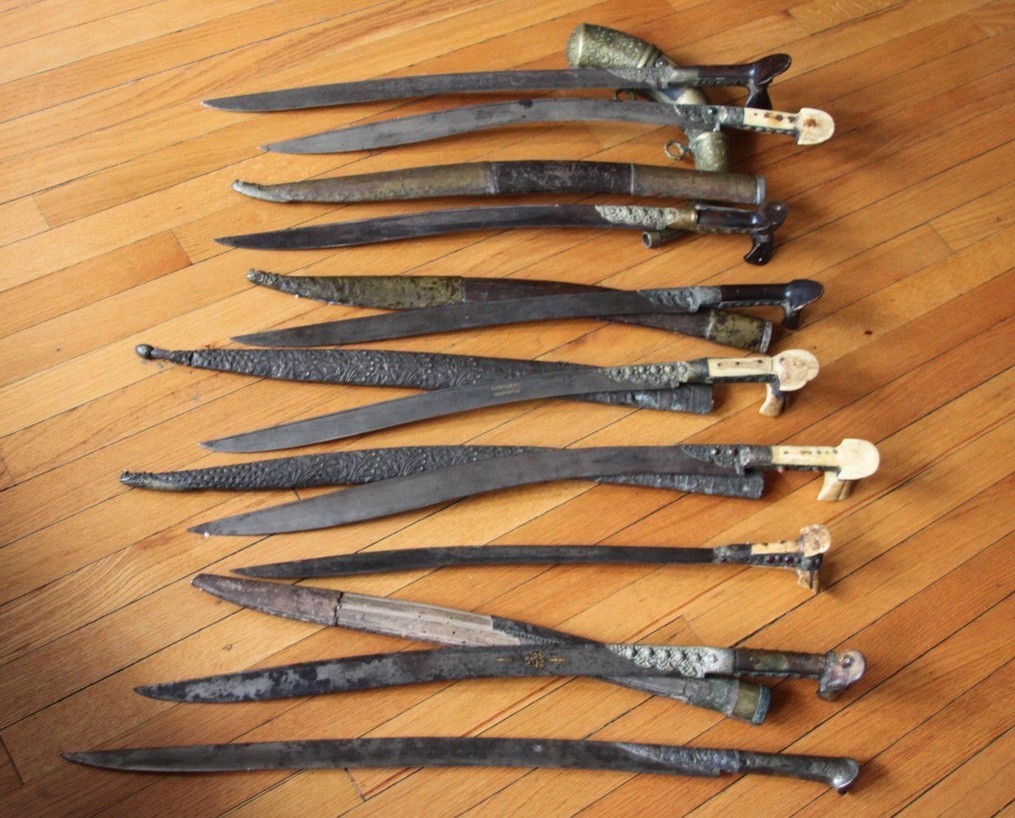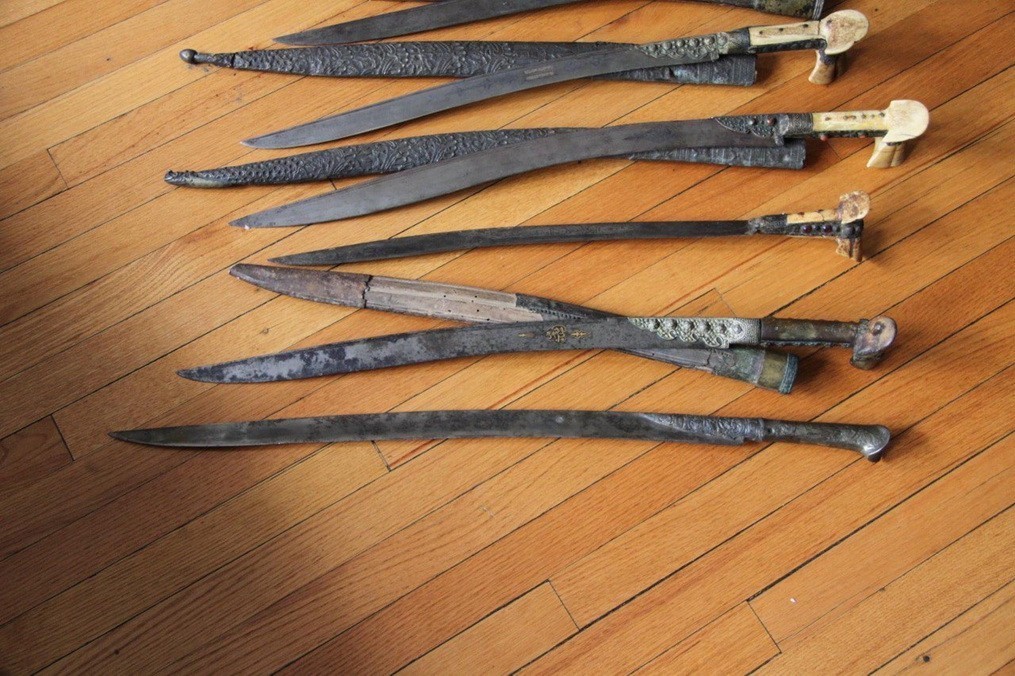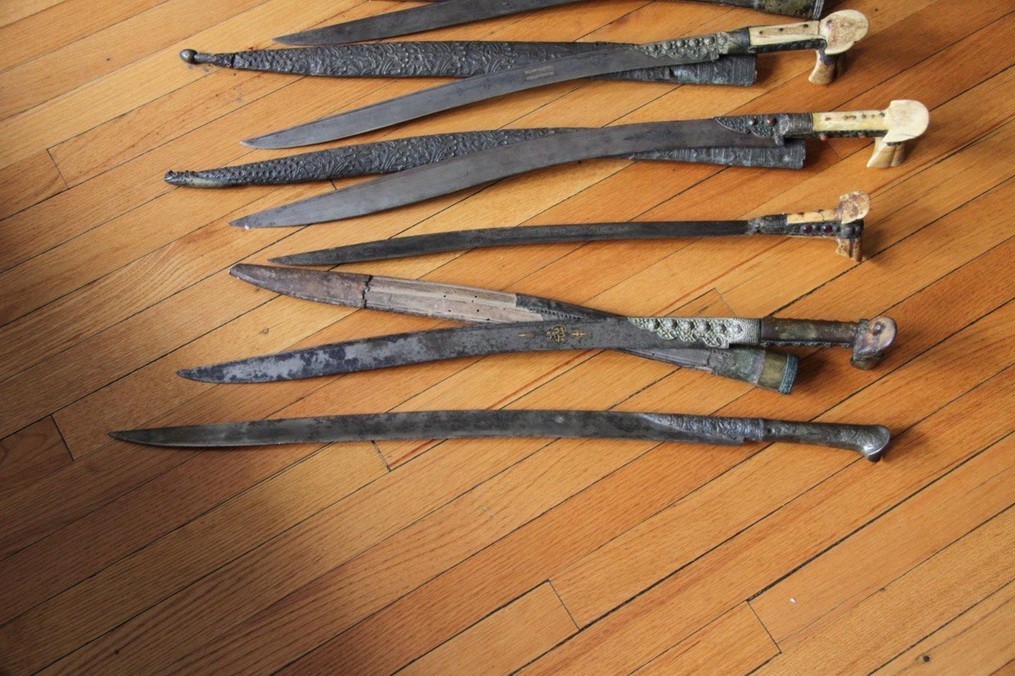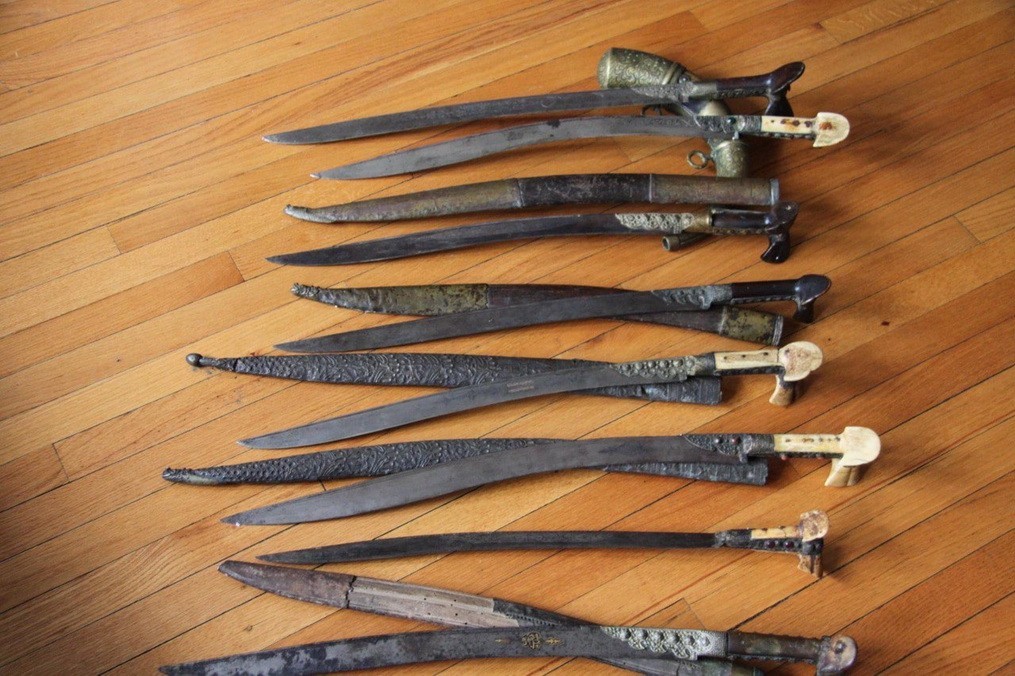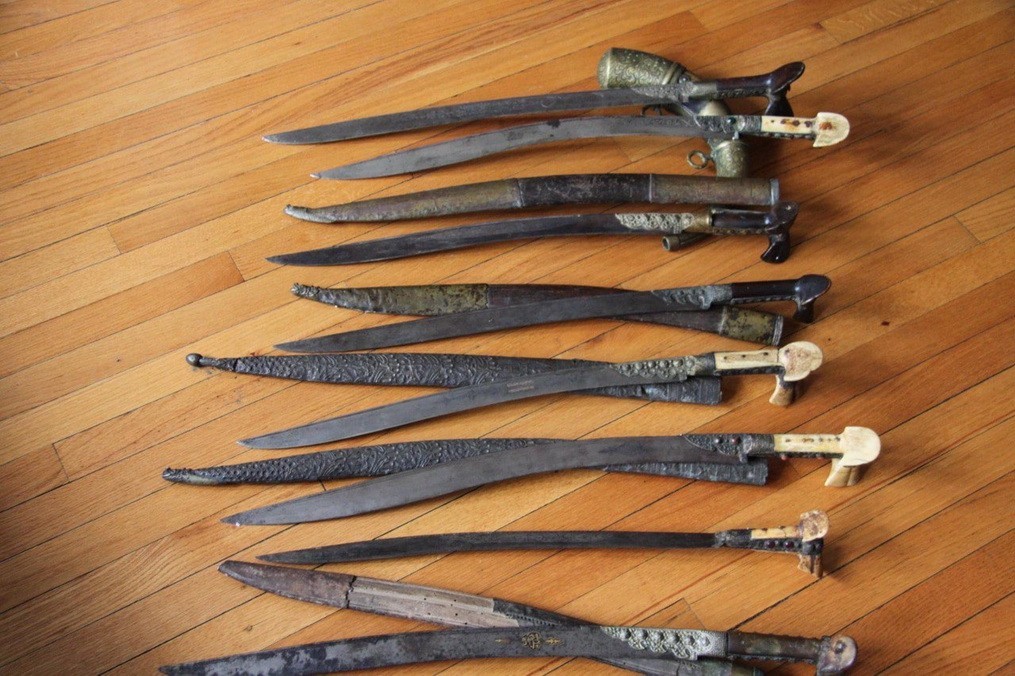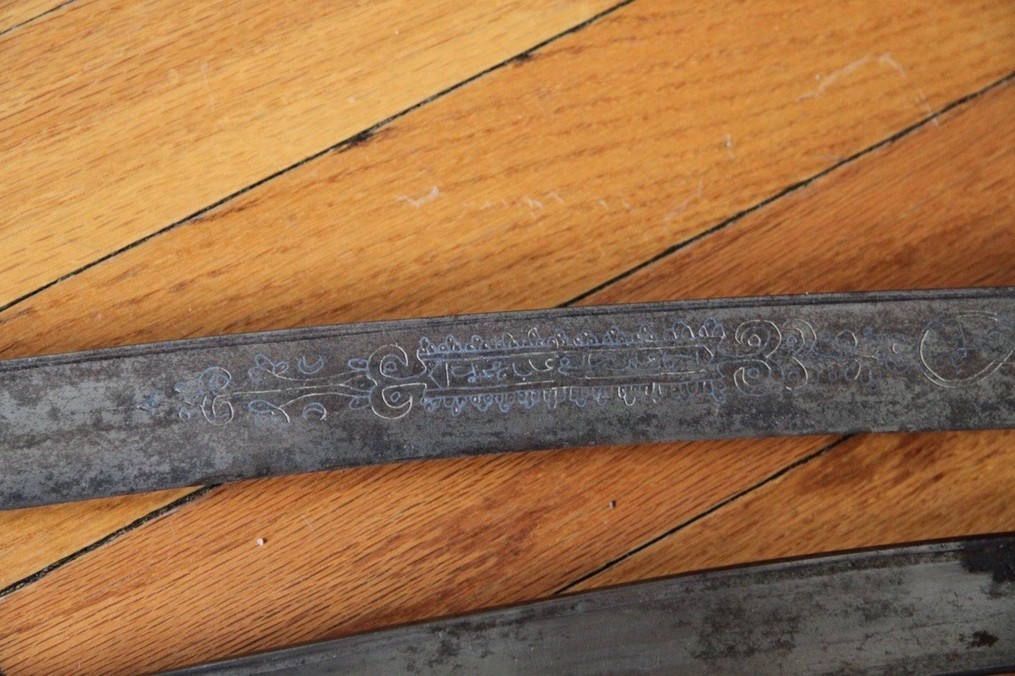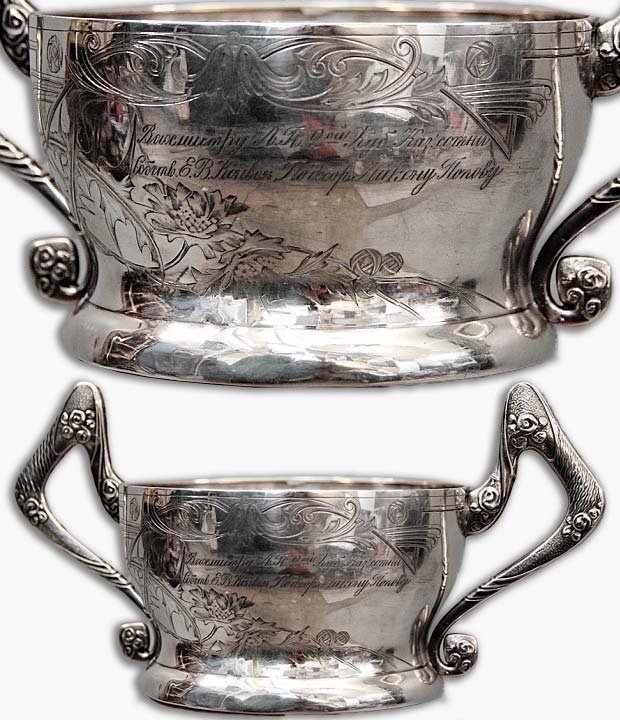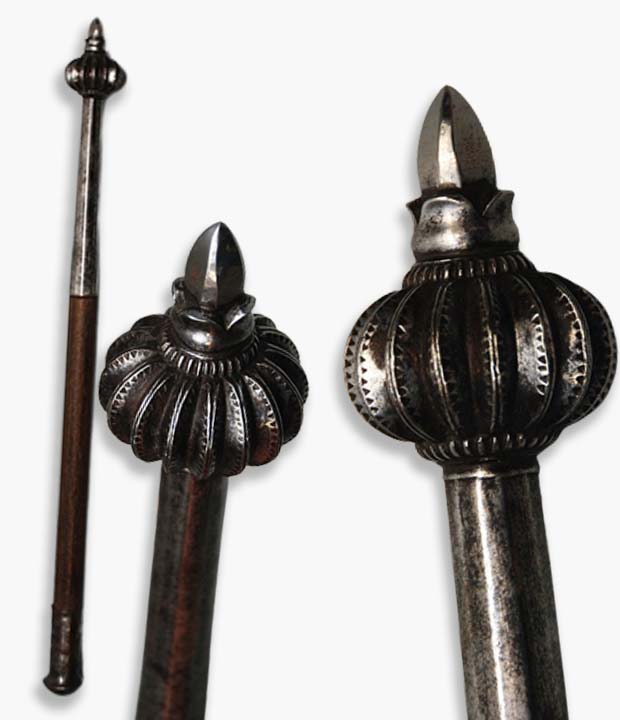The text on the site is translated into English, errors are possible. Sorry...

Collection of antique Ottoman empire Yatagans\scimitars sword
Buy antique ⚔️Collection of Ottoman empire Yatagans\scimitars sword for gifts ? and collectibles for Europe and USA
Collection of 8 Yatagans-scimitars sword located at Chicago USA
Hi to all. I want to show you an interesting collection of antique scimitars (Yatagans) for sale to collectors of antique weapons.
The scimitars have a good appearance and are also marked: they have a brand:
This marked on Yatagans\Scimitars translated as: it is written work done by order of Khalil Agha.
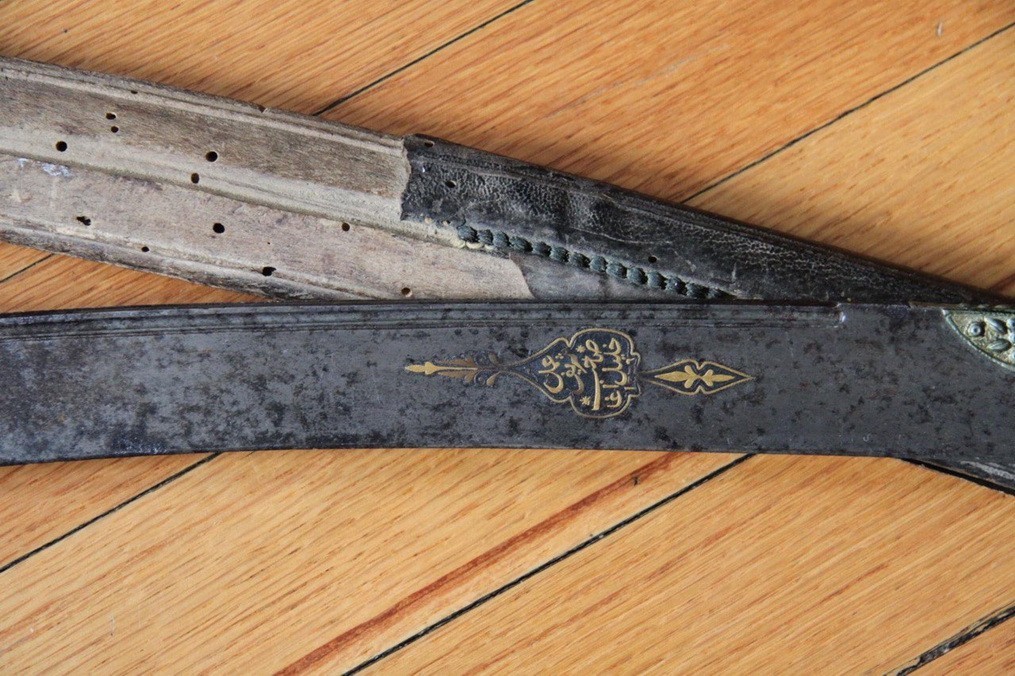
This marked on Yatagans\Scimitars translated as: done by the lowest peasant Ebrahim.
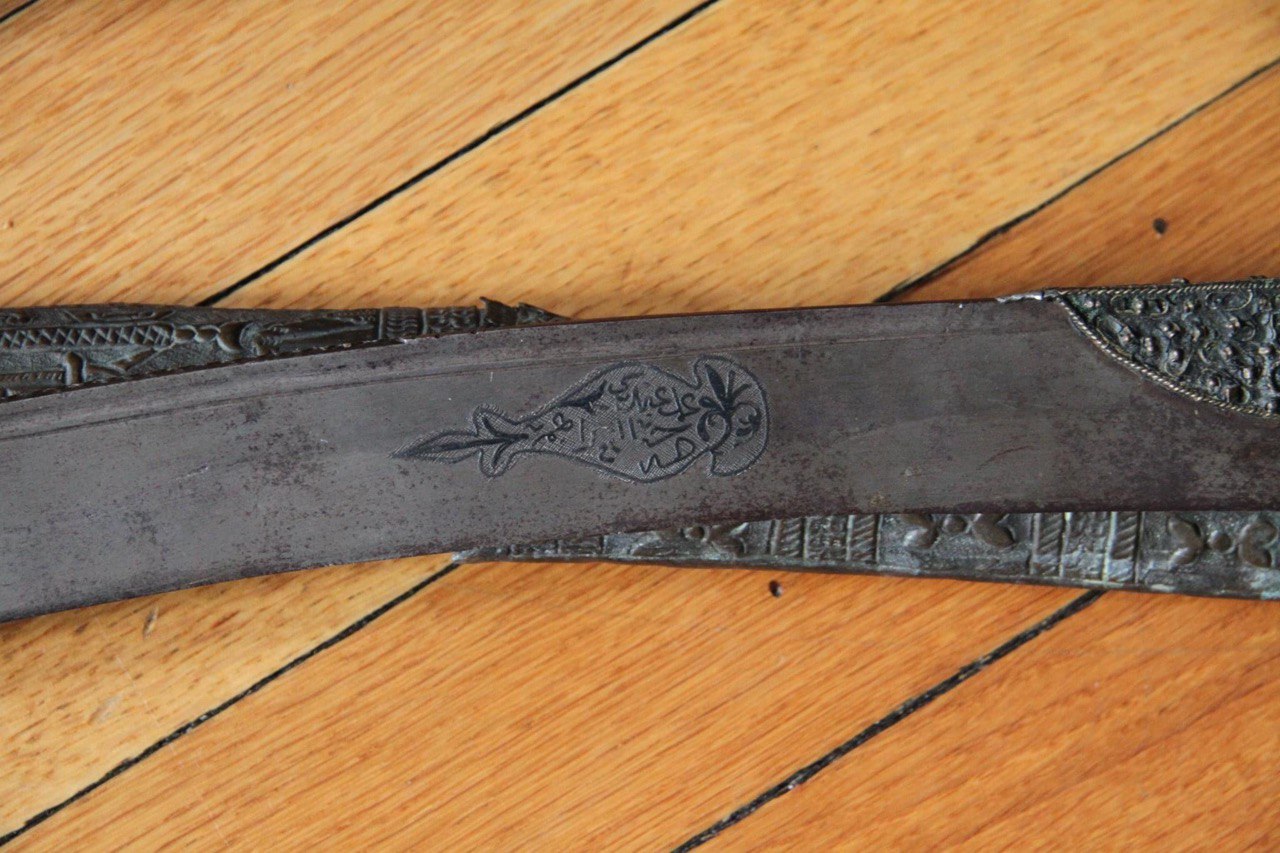
This marked on Yatagans\Scimitars translated as: Work of Ibrahim ibn Mohammad. The Arabic number shows the year it was built, 1280 in the Islamic calendar, which is 1901-2 in the Gregorian calendar.
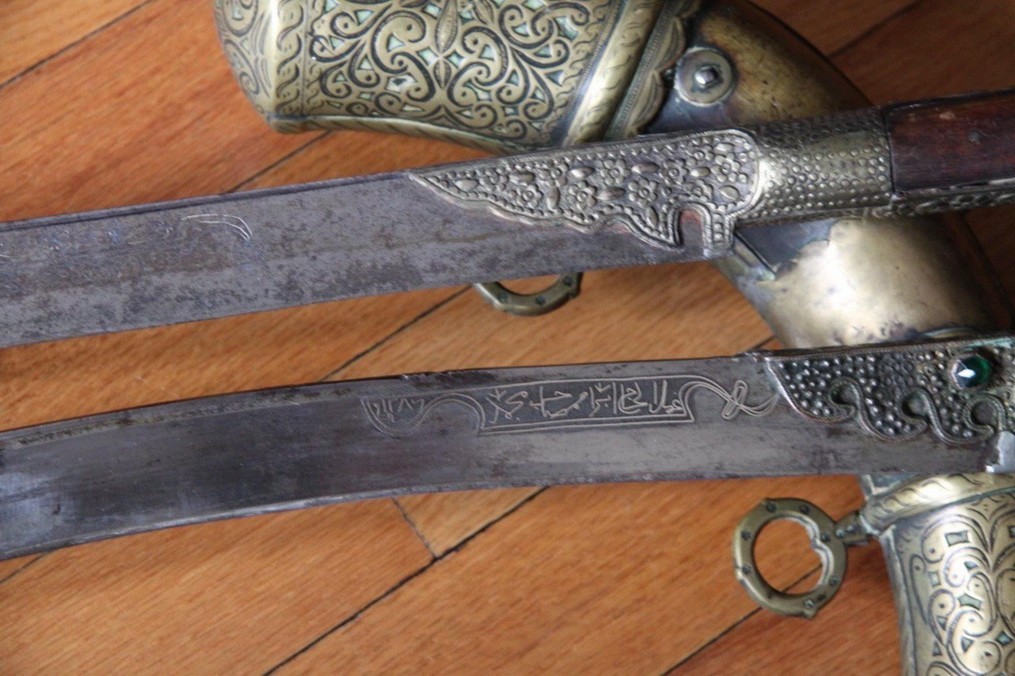
Historical information about Yatagans-Scimitars:
Yatagan is an original type of weapon, both its blade and hilt are peculiar. In most scimitars, the blade has a double bend, first from the handle up, then, approximately from the middle, down. The cutting part of the blade is not externally curved. And the inner one is concave.
The Greco-Macedonian sword-cleaver makhaira (6th to 1st century BC) had such a blade; the new Spanish name for this form is “d’espada falcata” – “scythe-shaped sword“.
The exact origin of this type of weapon has not been clarified. He is associated with both the Etruscan world and the Greek. and with the Hellenistic. He is known in Italy, and in Spain, and in the Balkans. Such a blade can be applied both cutting and chopping and stabbing. The cutting concave part of the blade is characteristic of both South India and Nepal.
The second feature of the scimitar is the shape of the handle – the presence of widely spaced sharply protruding “ears”. The earliest such form is found in the bronze swords and daggers of Luristaia (Iran), dating back to 3-1 millennia BC. e. Similar ears are present on straight Levantine (Mediterranean) knives of the 15th-16th centuries. The unusual shape of such “ears” is associated with the shape of the tibia of a large animal; perhaps it had some symbolic meaning.
Ottoman empire Yatagans sword Image:
